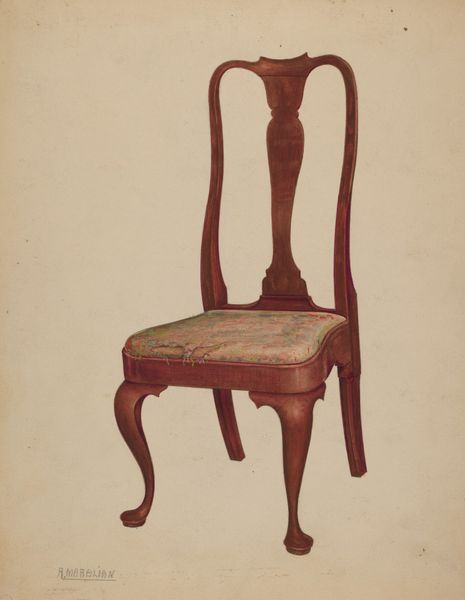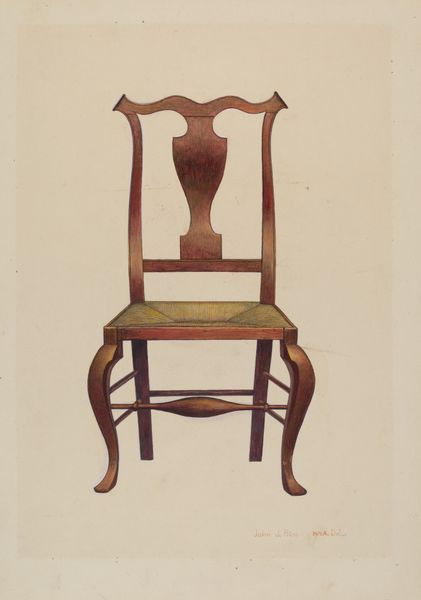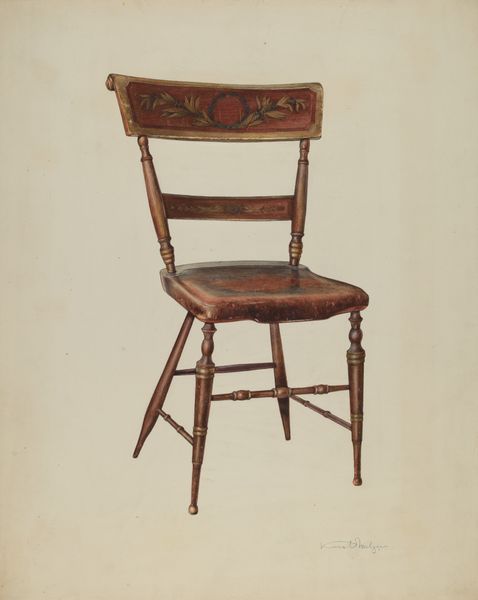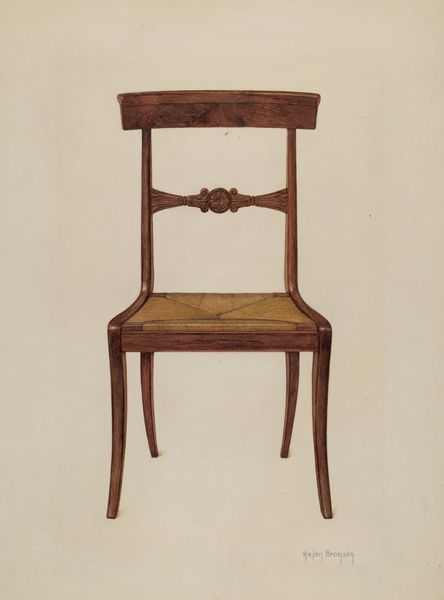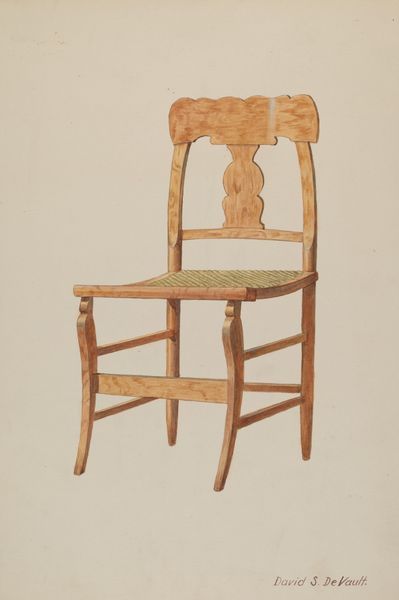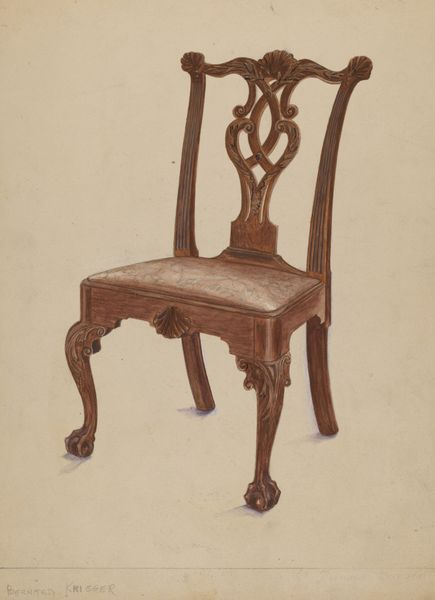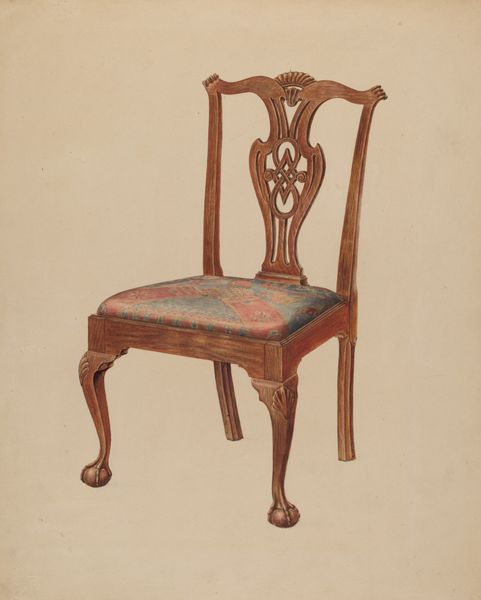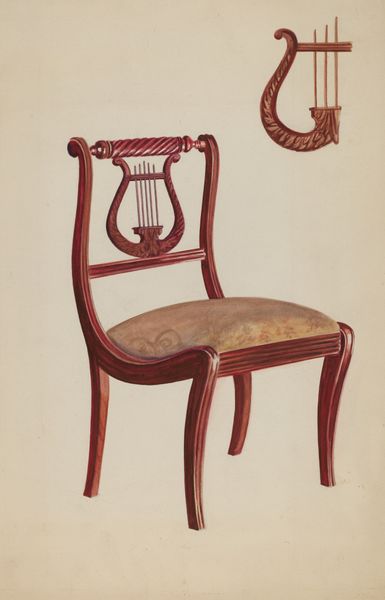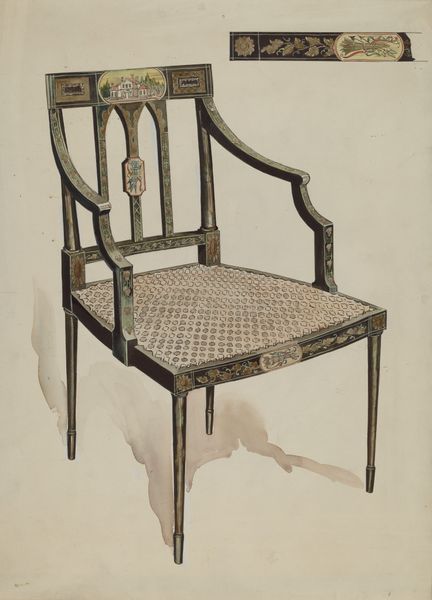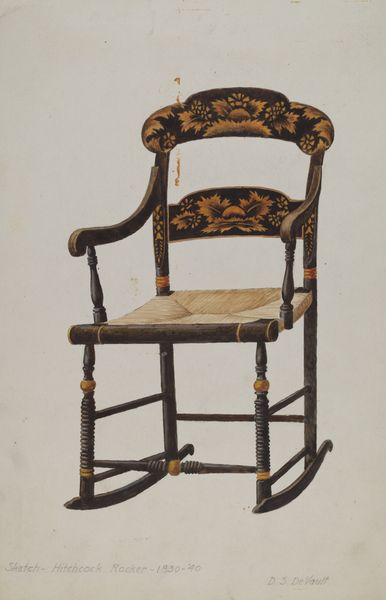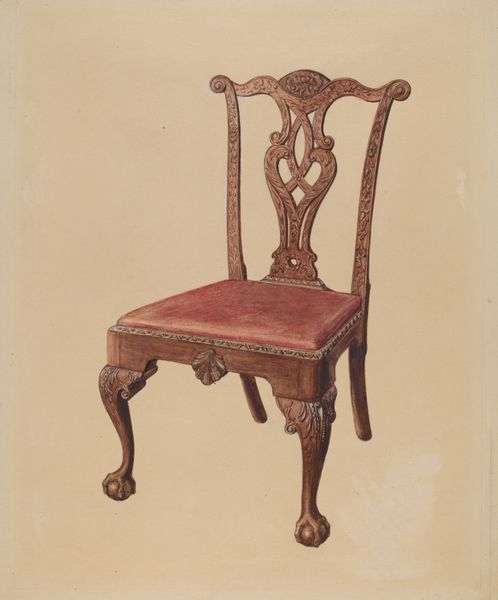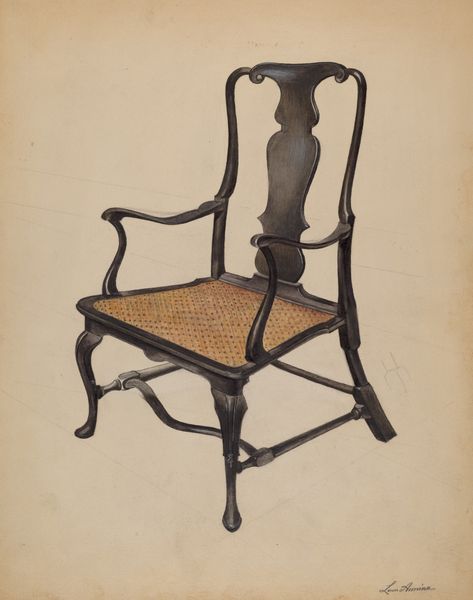
drawing, charcoal
#
drawing
#
sculpture
#
charcoal drawing
#
oil painting
#
charcoal
#
charcoal
Dimensions: overall: 35.5 x 27.7 cm (14 x 10 7/8 in.) Original IAD Object: 34" high
Copyright: National Gallery of Art: CC0 1.0
Curator: We're looking at Angelo Bulone's "Zoar Chair," circa 1937, rendered with charcoal. The chair itself dominates the frame. Editor: My first thought is one of melancholic stillness. It seems to emanate a sense of worn comfort, like it has quietly witnessed countless stories over its lifetime. Curator: Observe how the light source impacts the texture; there is subtle highlighting that defines the turned legs and carved back, contributing to a certain elegance within what appears to be an everyday object. The form creates a strong vertical emphasis, juxtaposed against the chair’s horizontal planes. Editor: Indeed. But to consider this outside of the sociopolitical and artistic milieu of the 1930s is reductive. The style could easily reference the broader American regionalist focus, with echoes of the economic hardships of the Great Depression—a humble yet stalwart object embodying enduring utility for an underserved population. How does this singular item fit into this cultural fabric? Curator: The chiaroscuro treatment adds considerable depth, moving beyond mere representation. Also, observe the chair's negative spaces; the openness of the backrest and the angles of its legs establish formal harmony. Editor: And yet, I wonder about accessibility. Considering how many may never own fine furniture, doesn’t the very selection of this 'common' subject still reflect underlying disparities in the art world—the objectification of furniture attainable for few? Curator: We must appreciate Bulone's capacity to draw a relatively plain object, transforming it via skillful handling of the medium. It embodies form through value. Editor: Fair enough, yet the power lies in connecting visual aesthetics to the chair’s implied utility and potential for collective narratives within the American experience of the period. Considering objects like this broadens awareness of domestic experience as a legitimate space for art, perhaps reflecting labor, leisure, or communal activity across different economic classes and backgrounds. Curator: It becomes clear how focused attention yields significant artistic impact, highlighting craftsmanship. Editor: True, but it is also that craft embedded in a narrative context.
Comments
No comments
Be the first to comment and join the conversation on the ultimate creative platform.
